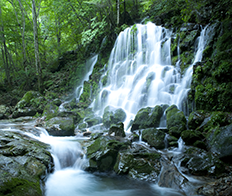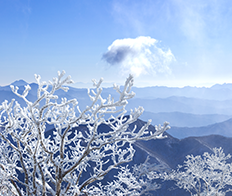- KATRD 2023 International Conference
-
November 8(Thu)-10(Fri), 2023 Lotte Hotel World, Seoul, Kore

- Information
Seoul, Korea
Seoul
Seoul, with a population of over 10 million, is one of the world’s largest cities. With the Han River running across the city and magnificent and splendid mountains surrounding it, it is indeed the center of the Korean Peninsula, boastful of scenery rivaling that of any city in the world. Seoul maintains not only tradition with ancient architecture and historical sites but also modernity showing the newest technology as the business center of Northeast Asia.
The area of present-day Seoul was first established as a capital for the Korean people with the founding of the Baekjae Kingdom in 18 BC. Soon after, Baekjae, Goguryeo and Silla fought for the control of the area, indicating the strategic importance of Seoul in the Korean Peninsula. After the Unified Silla Era and the Goryeo Era, the Joseon Dynasty declared Seoul its capital and since then Seoul has developed into the cultural and economic mecca of Korea. Seoul acts as a regional business center in Northeast Asia, and as an international hub for consumption and distribution based on highly efficient financial and distribution systems, the advanced digital industry and the competitive knowledge economy. Seoul is one of the world’s best-connected cities with two international airports and an extensive airport-to-city transportation network. Seoul boasts the easy-to-use public transportation systems, including subways, buses, and more.

Korea
The Republic of Korea is the southern part of the Korean Peninsula surrounded by water on three sides. It is located at a geographically important position in Northeast Asia, neighboring Japan to the east and China to the west. Korea’s land space is 100,329km2 with a population of 50 million, a relatively high population density. Mountains cover 70% of Korea's land mass, making it one of the most mountainous regions in the world.

Korea has four distinct seasons and offers a varied natural beauty. Colorful flowers embroider the country in spring and mountains, and seas are lively during summer. Autumn is decorated with fall foliage, and winter sports are offered on white snow. Any season is the best season for your trip. For more details regarding weather, please visit here. Visit
- Culture
-
Hanbok
Hanbok is the traditional attire of the Korean people. Worn daily up until just 100 years ago, these days it is only worn on festive occasions or special anniversaries. It is a formal dress and most Koreans keep a hanbok for special times in their life. While the traditional hanbok was beautiful in its own right, the design has changed slowly but surely over the generations. The core of hanbok is its graceful shape and vibrant colors, which have had a major impact on the modern fashion industry. It is hard to think of hanbok as everyday wear but it is slowly being revolutionized through the changing of fabrics, colors and features, reflecting the public's desires. Many aspiring hanbok designers have altered hanbok for everyday wear with traditional elements at the basis of the garment but having a distinct modern feel.
-
Hansik
Hansik refers to traditional Korean food, centered around rice, served alongside a bowl of soup and a variety of side dishes. Most foods use meat and vegetables as the main ingredients, and are soaked in a brine or water rather than fried in oil, making hansik wonderful for one’s health. More than anything else, hansik’s most outstanding feature is the amount of fermented foods, which are beneficial in improving digestion, as well as preventing cancer. The most well-known fermented foods are kimchi (fermented cabbage), ganjang (soy sauce), doenjang (soybean paste), and gochujang (Korean chili paste).
-
The Korean Wave
The Korean Wave, also known as Hallyu, refers to the Korean pop culture phenomenon that is gaining great popularity around the world. It began with Korean dramas and movies garnering popularity in Asia, but in recent years, Korean pop music has become popular around the World. If in Korea, be sure to visit filming locations or fantastic cultural performances and experience diverse aspects of the Korean pop culture.


 KATRD
KATRD
 LOGIN
LOGIN





